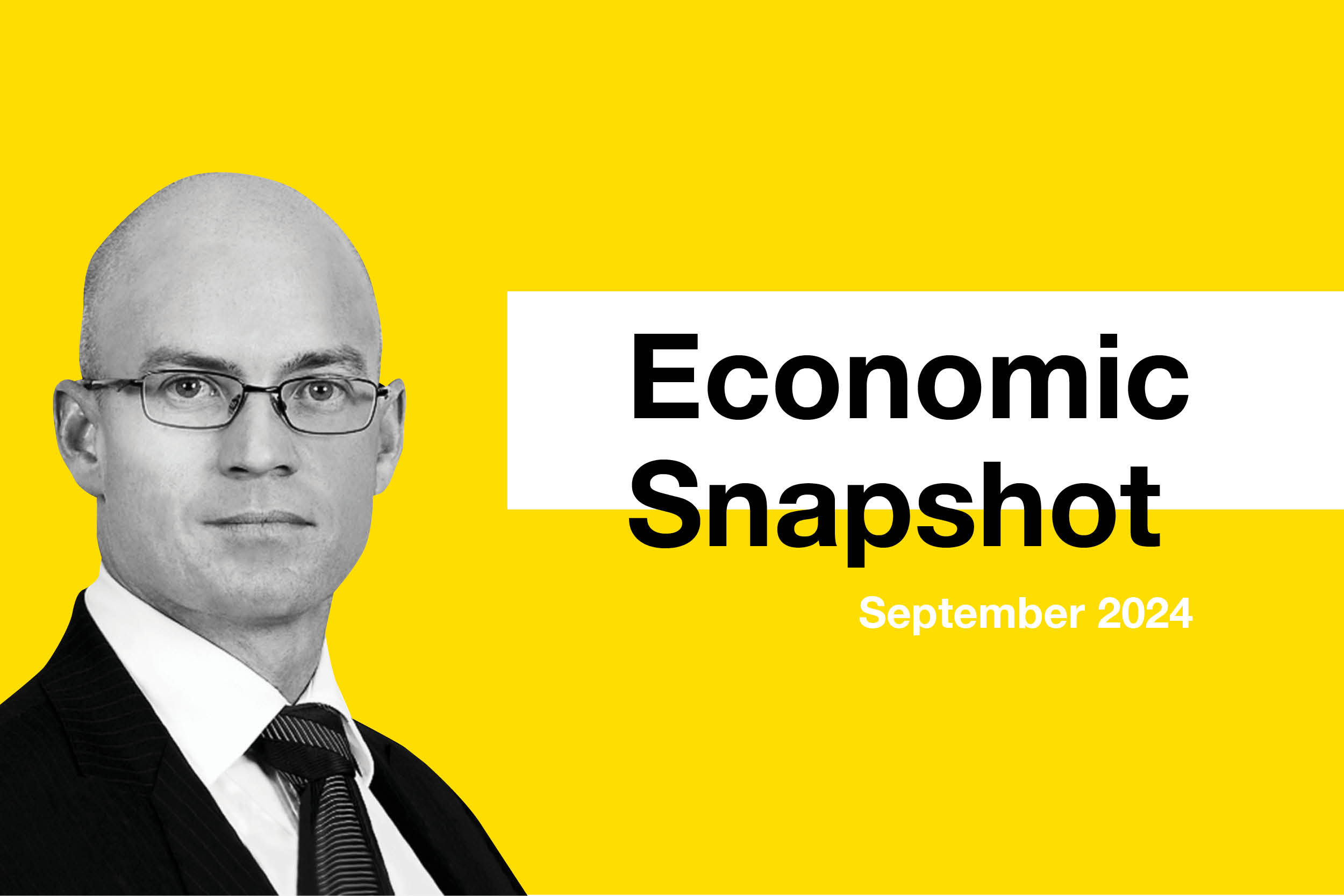
This article was prepared by Michael Furey, Principal of Delta Research & Advisory, on behalf of HPartners Group.
IN SUMMARY
A month for cheaper or more defensive risky assets
- The big news for September was the US Federal Reserve reduction in its cash rate by 50bps to 4.75-5.00%. This appeared to provide support for global bonds, property and infrastructure assets, although global shares ended the month relatively flat.
- Lower interest rates are only likely to persist if inflation stays low and economic outlook is uncertain.
- The deflation in energy (e.g. Oil) prices has significantly contributed to lower inflation and the two wars could reverse this trend should they deteriorate much further, as services inflation remains stubbornly high.
- Australian markets had their best relative performance for a while. Australian shares, both small and large, produced strong returns whilst the best performing sub-asset class was Australian REITs (6.6% for September … and now 47% for 12 motnhs!!).
- We reiterate that the US sharemarket is expensive whether historically or compared to other markets, and the Chart on the bottom of page 4 shows that Global Quality (i.e. low debt, consistent profitability, and US dominant) is its most expensive for many years, whilst Value and Smaller Companies appear comparatively cheap.
- The core investment message remains the same and is do not chase the strong performer, maintain diversification, rebalance, and prepare for potential volatility as economies adjust.
Chart 1: Value style via EM and Australian shares has a rare win over Global
Selected Market Returns in AUD Month to 30 September 2024
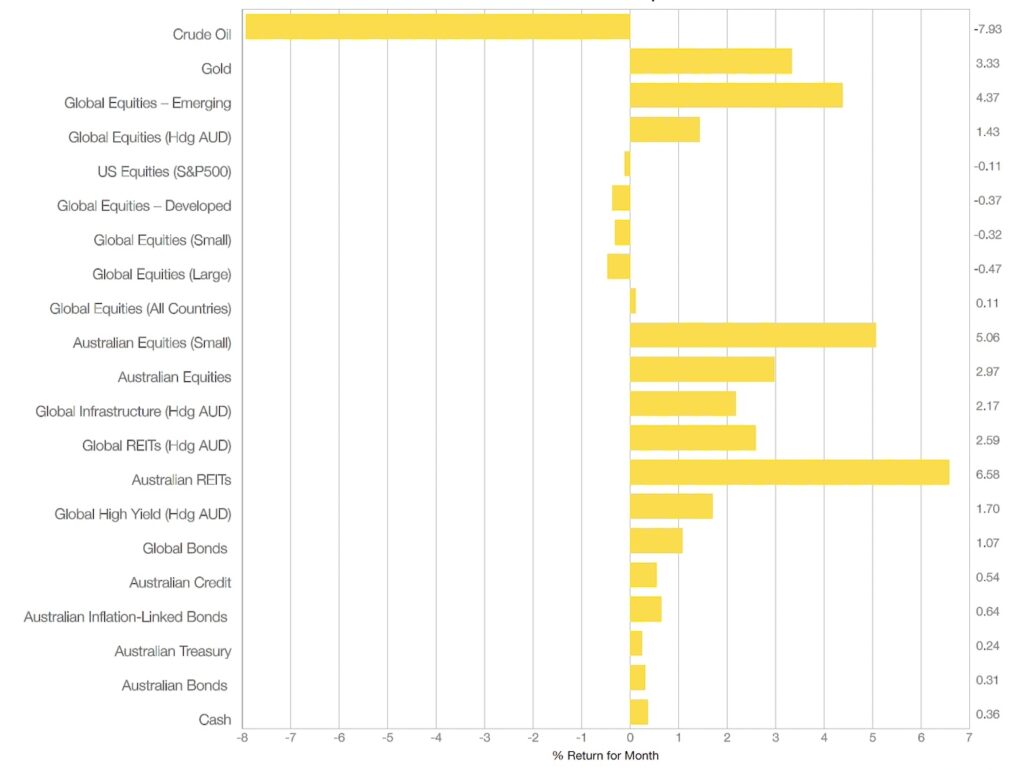
WHAT HAPPENED LAST MONTH?
Markets & Economy
- August was a challenging month for sharemarket investors as Japanese equities had their biggest one-day crash since the 87 crash, after the yen rallied and interest rates increased, and US technology stocks sold off in the first week before coming back a little.
- At the end of August, global sharemarkets produced small losses but it was initially looking like being much worse as the early August selling was very strong.
- One of the main reasons for the selling of risky assets was the potential start of regime change as the market focus shifted from inflation to economic concerns. In the US, inflation dropped relatively sharply from 3.3% to 3.0% and unemployment continued its increase jumping from 4.1% to 4.3%. This combination suggested an economic slowdown is underway; hence the sell-off in shares, but its safe to say that its still way too early to be making a recession call when there is mixed data.
- For the first time in a while, bonds and real assets showed their diversification abilities during the sharemarket sell-off of the first week and and over August overall. Both bond and listed real asset prices went up as the sharemarket declined.
- As Chart 1 shows, the best performing assets over August were the long duration Global REITs (up 5%), Global Infrastructure (up 3.1%), and Australian and Global Bonds (up 1%).
- Whilst inflation concerns may be shifting to a secondary issue in USA, Europe, and other developed nations, in Australia it is still the primary focus. Australia’s inflation continues at an uncomfortable level (3.8%), and the Reserve Bank indicated they are unlikely to reduce their cash rate until 2025. The latest economic growth figure was weak (0.2%), and a continued weak Australian economy in the face of persistent higher rates should be expected.
Outlook
Has the economic and market regime changed?
- The focus appears to be shifting to the economy over inflation meaning lower interest rates are more likely. At the time of writing, the Federal Reserve is expected to reduce its cash rate on 19 September so one of the questions now, is do they drop 25bps or 50bps?
- Either way, longer duration bonds are likely to play a stronger role in investment portfolios as both diversifiers and consistent income providers. Whilst Australia’s Reserve Bank may not be reducing rates in the short term, they will inevitably follow suit, and it is probable that many investors will position their defensive portfolio with longer duration than previously.
- With High Yield and Sharemarkets continuing to look expensive, whether historically or in the face of weaker economics, they are likely to be volatile as money shifts from the inflation hedge to the economically resilient.
- As previously mentioned, some markets appear more expensive than others, and the most expensive of them all is the US sharemarket … and that’s across all traditional valuation measures. The US appears priced for perfection and an economic downturn would certainly be bad. Recent short bursts of selling have frequently occurred amongst expensive tech stocks as market participants appear nervous about the sustainability of their earnings trajectory.
- Diversification continues to be essential in this environment, whether shares, bonds, real assets, at both the security and broader asset class level.
Major Market Indicators
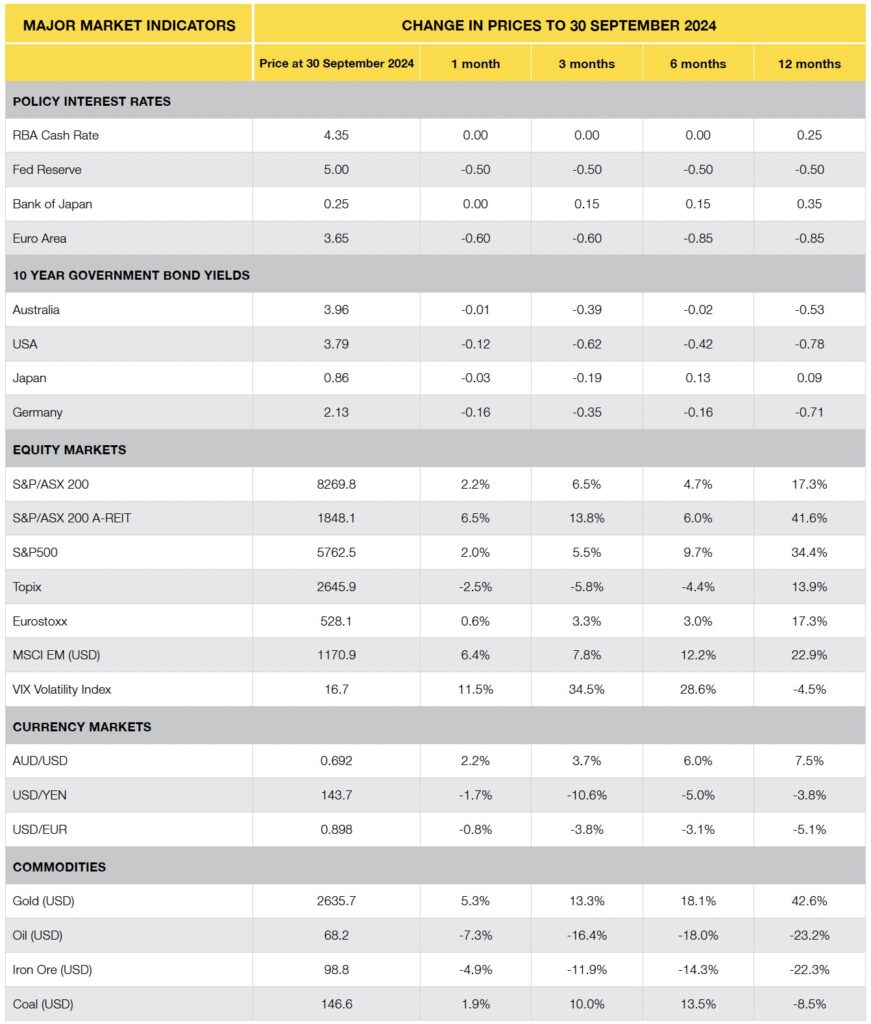
Screenshot
Sources: Tradingview, Morningstar, Trading Economics, Reserve Bank of Australia
12 Month Asset Class Return
Selected Market Returns in AUD – 12 Months to 30 September 2024
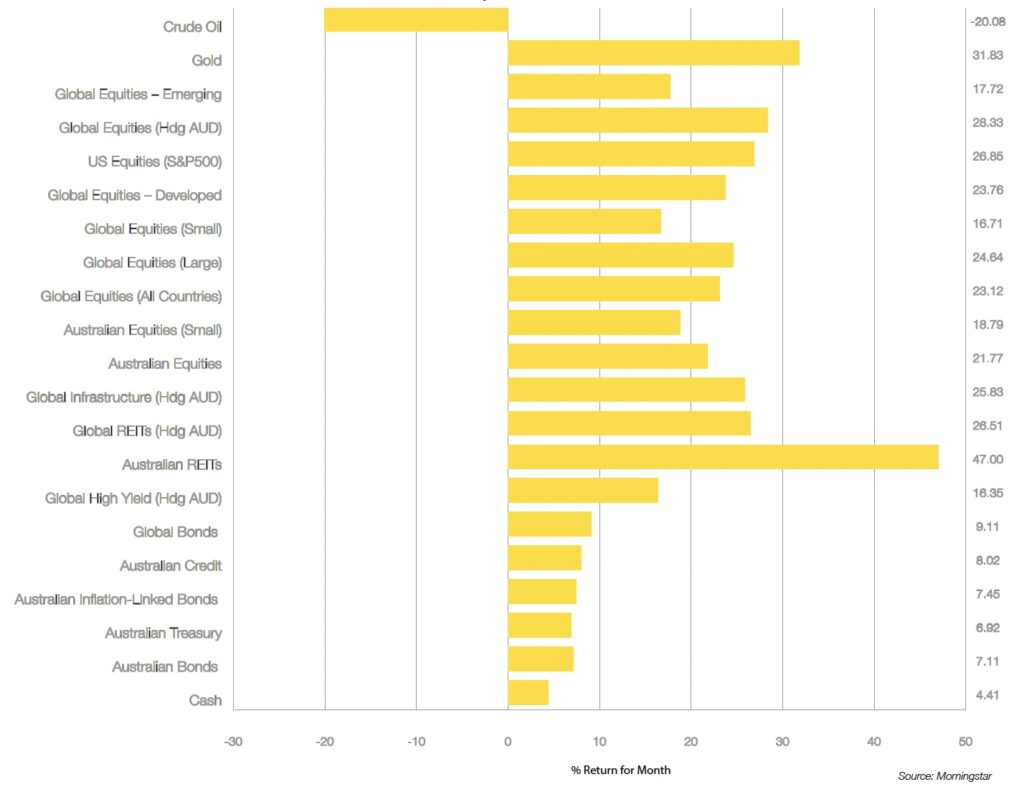
Screenshot
Australian REITs with the best performance over 12 months to 31 August (led by Goodman Group which returned over 70%!!!).
MSCI World Growth and Quality trade around 30 times whilst Value and Small Cap have valuations almost half that.
MSCI World Quality is at its most expensive for many many years.
Delta Factors – Understanding Investment Performance Behaviours
Factor Valuation Metrics
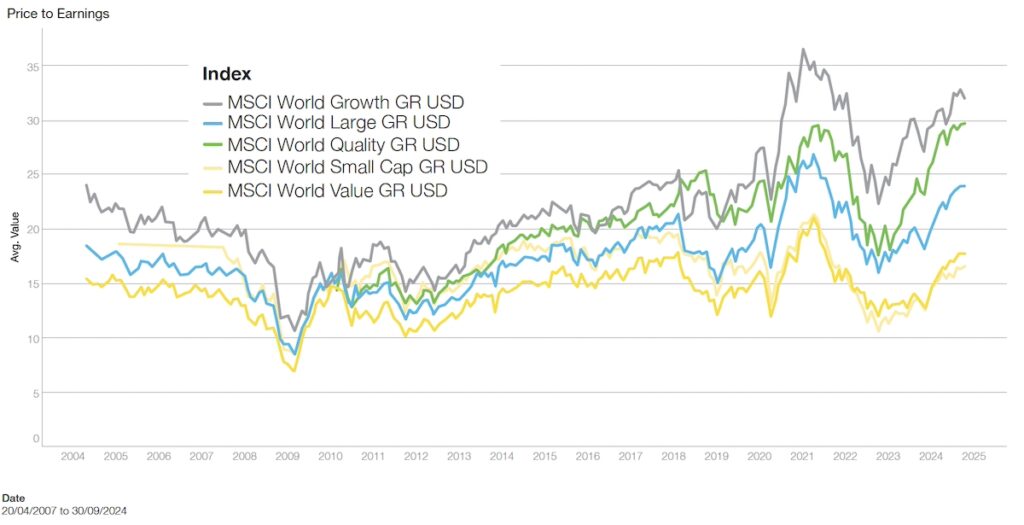
Latest News Articles
Back to Latest News
End-of-Year Money Checklist: 10 Things To Do Before NYE

Redundancies in Australia Rising Quietly in White-Collar Sectors


